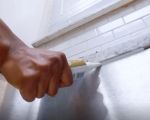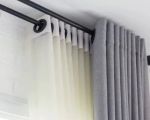How to Choose the Right Flooring for Your Home: A Comprehensive Guide
When I moved into my new home, one of the biggest decisions I had to make was choosing the right flooring. It might sound simple, but with so many options available, it quickly became clear that finding the right flooring for your home can be a daunting task. Every type of flooring has its own advantages and challenges, and it's important to consider your lifestyle, the room’s purpose, and your budget before making a final decision. In this article, I’ll take you through the factors you should consider and help you choose the best flooring for your home.
1. Consider Your Lifestyle and Needs
When it comes to choosing flooring for your home, the first step is to think about your lifestyle. I remember spending a lot of time contemplating this when deciding what would work best for my family. Are you someone who entertains often? Do you have pets or children? These are all key considerations that can influence your choice. Some flooring options are more durable, while others are more luxurious but less practical for high-traffic areas.
1.1 High Traffic Areas
If you have kids or pets running around, high-traffic areas will need a durable flooring option that can withstand constant wear. For example, I opted for laminate flooring in my living room because it's highly resistant to scratches, dents, and stains. It's perfect for a family room that sees a lot of action every day.
1.2 Comfort and Warmth
If comfort and warmth are a priority, especially in bedrooms or living spaces, carpets or rugs can provide that cozy feeling. My family loves how soft the carpet feels underfoot in the bedrooms, and it also adds a layer of insulation to help keep the house warmer in winter. However, if you suffer from allergies, you may want to avoid carpeting, as it can trap dust and allergens.
1.3 Easy Maintenance
For easy maintenance, consider materials like vinyl or tile. These materials are resistant to moisture, making them great for bathrooms or kitchens. I personally love vinyl flooring in my bathroom since it’s waterproof, easy to clean, and still looks great. It also doesn’t require as much upkeep as natural wood flooring, which can require more maintenance and periodic refinishing.
2. Types of Flooring: Pros and Cons
With so many different types of flooring, it’s helpful to weigh the pros and cons of each option. After conducting research and consulting with a few contractors, I narrowed down a few popular choices based on their benefits, costs, and suitability for different spaces in the home.
2.1 Hardwood Flooring
Hardwood flooring is a classic and timeless choice that can add warmth and elegance to any space. In my living room, I installed oak hardwood floors that complement the natural light coming in through the windows. However, hardwood can be on the pricier side, and it can be susceptible to scratches or dents, especially in high-traffic areas. If you choose hardwood, be sure to maintain it by refinishing or resealing it every few years.
2.2 Laminate Flooring
Laminate flooring is an affordable alternative to hardwood that still offers a similar look. The best part about laminate is that it’s incredibly durable and resistant to scratches and stains. I’ve found it to be a great option for my family room, as it’s low-maintenance and easy to clean. Laminate also mimics the look of real wood or stone, which is perfect if you want the aesthetic without the cost.
2.3 Vinyl Flooring
Vinyl flooring has become increasingly popular due to its versatility and ease of maintenance. There are two main types: traditional vinyl and luxury vinyl plank (LVP), which is designed to look like wood or stone. I love LVP for my kitchen, as it’s waterproof, durable, and easy to maintain. It’s also much softer underfoot than tile, making it more comfortable to stand on for long periods of time.
2.4 Tile Flooring
Tile flooring is a great option for areas that are exposed to moisture, such as bathrooms, kitchens, or laundry rooms. Ceramic and porcelain tiles are durable, resistant to moisture, and available in a wide range of designs. My bathroom has porcelain tiles that look like marble, which gives it a luxurious feel. The downside to tile is that it can be cold underfoot, which is why I added rugs for extra comfort in high-traffic areas.
2.5 Carpet Flooring
Carpet is a soft and comfortable flooring option that adds warmth and coziness to bedrooms and living rooms. It’s also an excellent sound absorber, which is a bonus if you’re in a noisy area. However, as I mentioned earlier, carpets can be harder to maintain if you have pets or children. They trap dust and allergens and may require deep cleaning every few years. But if you enjoy the softness and warmth underfoot, carpet might be a great option for certain rooms.
3. Budgeting for Your Flooring Project
Budgeting is one of the most important factors when choosing flooring. Prices can vary widely depending on the material, quality, and installation costs. I learned the hard way that while some flooring options may seem affordable initially, the installation and long-term maintenance costs can add up quickly.
3.1 Consider Installation Costs
Some flooring materials, like tile and hardwood, require professional installation, which can add to the overall cost. On the other hand, options like laminate and vinyl are often more DIY-friendly, saving you money on installation fees. If you're on a budget, consider doing some research on how to install certain flooring types yourself. Just make sure you're confident in your skills, as poor installation can affect the quality of your floor over time.
3.2 Look for Sales and Discounts
If you’re working with a tight budget, don’t forget to look out for sales and discounts at home improvement stores. During my flooring project, I found that shopping around during holiday sales helped me get the best deals on materials. Some stores even offer financing options to help spread out the cost of your purchase.
4. Choosing Flooring for Different Rooms
Different rooms in your home may require different types of flooring. The kitchen, bathroom, and living room all have different needs in terms of durability, comfort, and aesthetic appeal. I quickly realized that my flooring choices had to align with how each space was used and how much foot traffic it would see.
4.1 Kitchen and Bathroom
For high-moisture areas like the kitchen and bathroom, tile and vinyl flooring are excellent choices. They’re durable, moisture-resistant, and easy to clean, which is perfect for spaces that are exposed to spills and humidity. In my kitchen, I chose luxury vinyl plank, as it offers the look of wood but is much more practical for the wet conditions.
4.2 Living Room and Bedrooms
The living room and bedrooms are areas where comfort is a priority. Hardwood, laminate, and carpet are all excellent choices for these spaces, depending on your preference. I opted for hardwood in my living room for its timeless appeal, while my bedroom has soft carpet that makes it cozy and inviting.
5. Sustainability and Environmental Considerations
If you’re concerned about the environmental impact of your flooring choice, there are plenty of sustainable options available. Look for materials that are sourced responsibly and have low environmental footprints. I’ve always made it a priority to choose eco-friendly materials when possible, and I’ve been happy to find many sustainable options that are just as durable and attractive as traditional materials.
Some flooring options, like bamboo and cork, are renewable and offer excellent durability without harming the environment. If sustainability is a priority for you, it’s worth researching these options and asking your flooring supplier about the environmental impact of the materials you're considering.
Choosing the right flooring for your home doesn’t have to be overwhelming. By considering your needs, lifestyle, and budget, you can find the perfect flooring to suit your space. Whether you're renovating a single room or remodeling your entire house, the right flooring will make a big difference in the overall feel and function of your home.
If you’re ready to start your flooring project, visit [ToolNest] for expert advice and recommendations on the best flooring options for your home.









